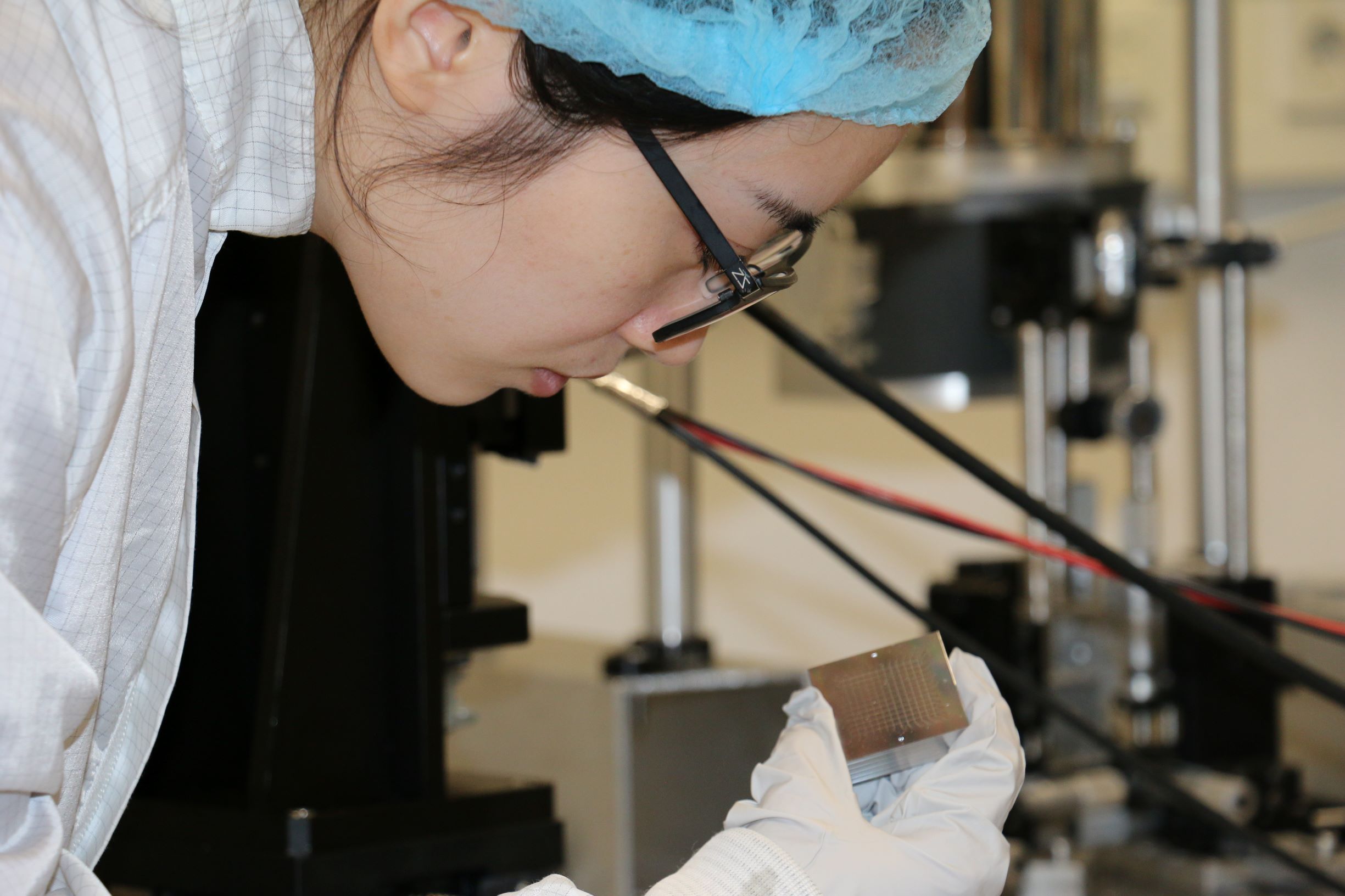Astronomen hebben terahertz-camera’s nodig om atomen in het interstellaire medium te onderzoeken. Dit vereist tralies met een lokale oscillator die meerdere stralingsbundels gebruikt. Yuner Gan, promovenda bij SRON en RuG, heeft nu de werking aangetoond van een concept met een recordaantal van 81 bundels. Publicatie in Optics Express.

Als je atomen en moleculen in het interstellaire medium wilt bestuderen, moet je er via een specifiek soort licht naar kijken: terahertz-straling. Licht met terahertz-frequenties valt in het golflengtedomein dat de vingerafdrukken bevat van verschillende stoffen.
Meerdere bundels
Astronomen hebben een speciale camera nodig, op basis van zogenoemde heterodyne ontvangers, om deze specifieke straling op te pikken. De ontvangers mixen een terahertz-signaal vanuit de ruimte met hun eigen signaal vanuit een lokale oscillator om een signaal op microgolf-frequentie te genereren, wat het gemakkelijker maakt voor wetenschappers om het te verwerken. Deze benadering maakt het mogelijk om atomaire en moleculaire vingerafdrukken vast te leggen met een hoge spectrale resolutie van tenminste een miljoen. Ruimtemissies op terahertz-frequenties hebben vaak onvoldoende plek voor een aparte oscillator voor ieder pixel, dus hebben ze een lokale oscillator nodig met meerdere stralingsbundels.
Hoge efficiëntie
Yuner Gan, een promovenda bij SRON Netherlands Institute for Space Research en de Rijksuniversiteit Groningen, heeft nu de werking aangetoond van een concept met 81 bundels. De huidige state-of-the-art is ongeveer tien bundels, zoals gebruikt wordt in NASA’s toekomstige GUSTO ballonmissie. Gesteund door een internationaal team heeft ze een tralie ontwikkeld die een enkele 3.8-terahertz beam opsplitst in 81 bundels met een hoge efficiëntie van ongeveer 95 procent. De 81 bundels zijn relatief uniform, wat cruciaal is voor de werking van de camera.
Publicatie
Yuner Gan, Behnam Mirzaei, Jose R.G. Silva, Ali Khalatpour, Qing Hu, Christopher Groppi, Jose V. Siles, Floris van der Tak, and Jian-Rong Gao, ’81 supra-THz beams generated by a Fourier grating and a quantum cascade laser’, Optics Express
Record number of beams by a grating for future space cameras
Astronomers need terahertz cameras to study the atoms in the interstellar medium. They need gratings for this with a local oscillator that uses multiple beams. Yuner Gan, a PhD student at SRON and RuG, has now demonstrated a local oscillator concept with a record number of 81 beams, published in Optics Express.
If you want to investigate atoms and molecules in the interstellar medium, you need to look at a specific type of infrared light: terahertz radiation. Light with terahertz frequencies falls in the wavelength domain which contains the fingerprints of various substances.
Multiple beams
Astronomers need a special camera based on so-called heterodyne receivers to pick up this specific radiation. These receivers mix a terahertz signal from space with its own signal from a local oscillator to generate a signal at microwave frequency, making it easier to handle for scientists. This approach allows to capture the atomic and molecular fingerprints at a high spectral resolution of at least one million. Space missions at terahertz frequencies often have insufficient room for a separate oscillator for each pixel, so they need a local oscillator with multiple beams.
high efficiency
Yuner Gan, a PhD student at SRON Netherlands Institute for Space Research and University of Groningen, has now demonstrated a local oscillator with 81 beams, while the current state-of the art is about ten beams, as used in NASA’s upcoming GUSTO balloon mission. Supported by an international team, she has developed a grating which splits a single 3.8 terahertz beam signal into 81 beams at a high efficiency of about 95 percent. The 81 beams are relatively uniform, which is crucial for the performance of the camera.
Publication
Yuner Gan, Behnam Mirzaei, Jose R.G. Silva, Ali Khalatpour, Qing Hu, Christopher Groppi, Jose V. Siles, Floris van der Tak, and Jian-Rong Gao, ’81 supra-THz beams generated by a Fourier grating and a quantum cascade laser’, Optics Express


